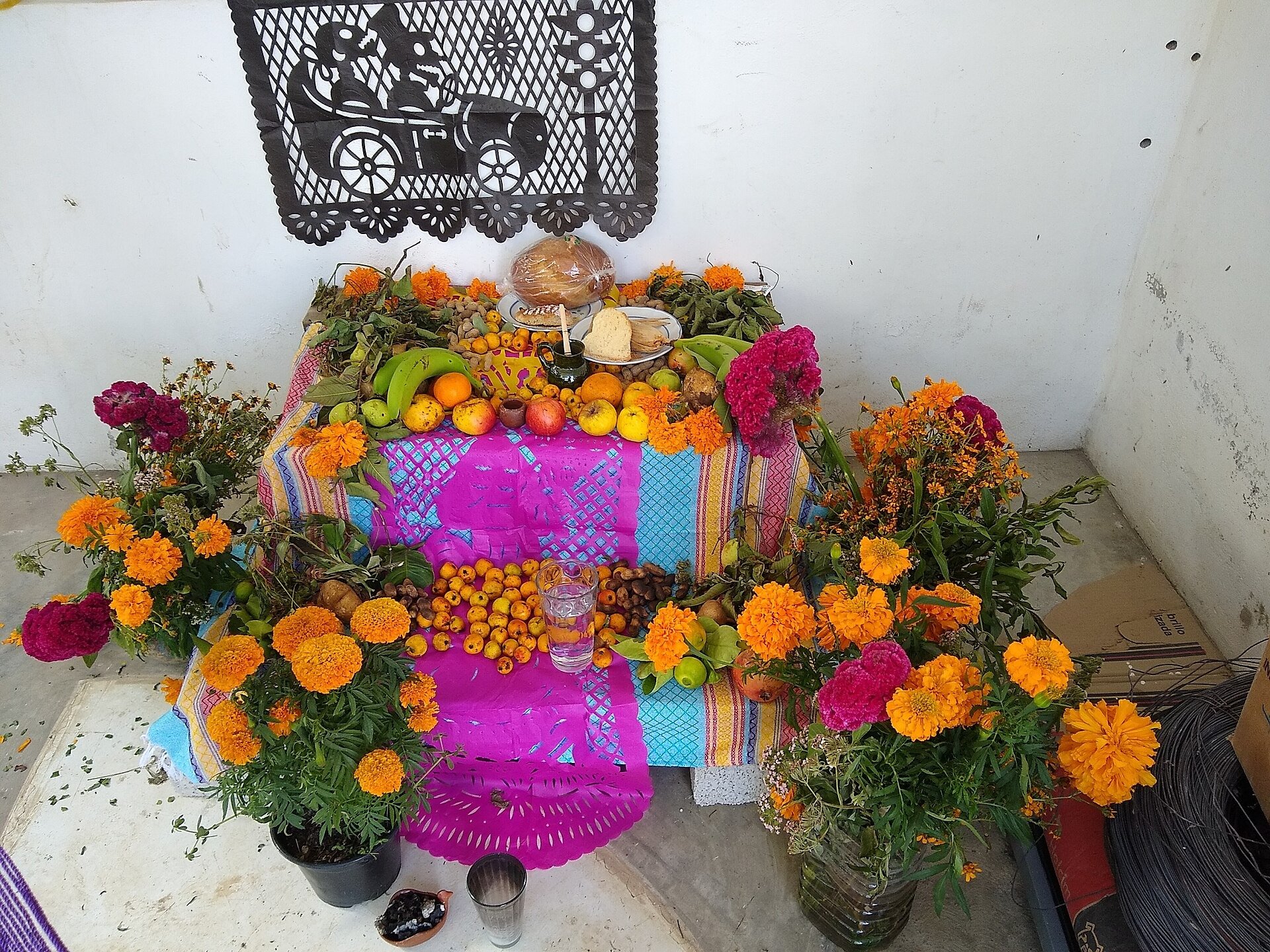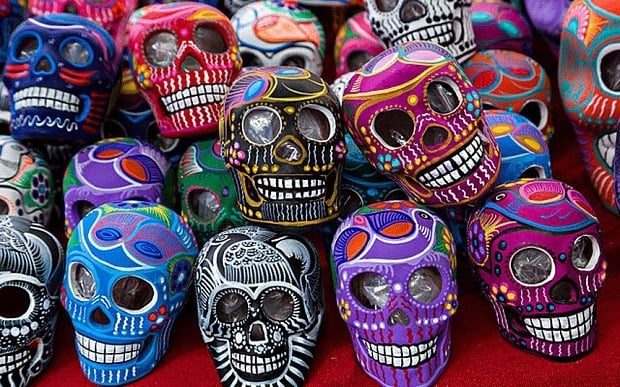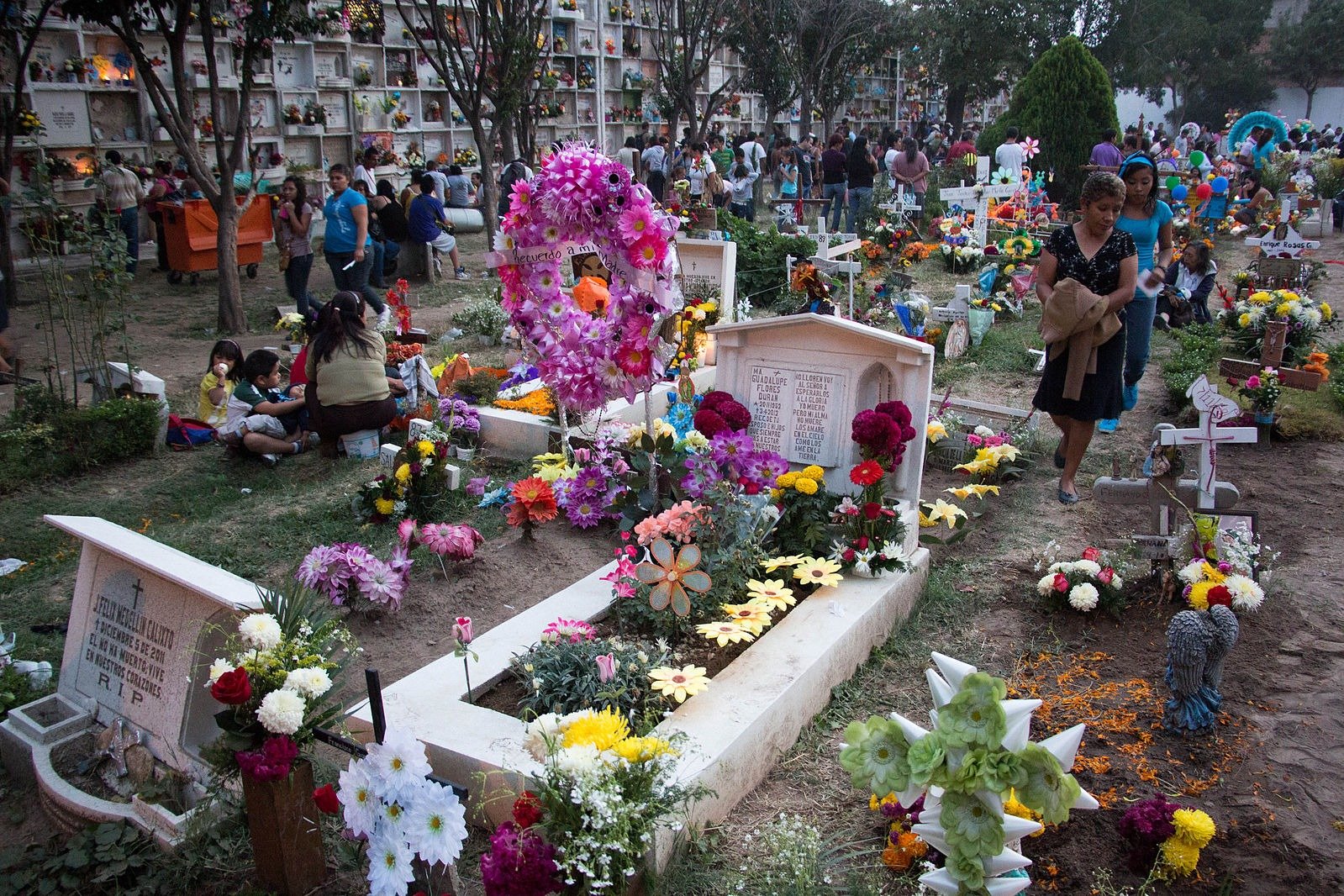Celebrating Mexico’s Day Of The Dead
Language
Reading Level
Listen to Article
Alignment

Día de los Muertos, or Day of the Dead, is a vibrant and joyful Mexican holiday to honor those who have passed. Held annually on November 1 and 2, it gives families a chance to remember loved ones. The first day, called Día de los Angelitos, is for children who have died, while the second focuses on adults.
History and origin
The holiday’s origins date back thousands of years to the native peoples of Mexico and Central America. These ancient civilizations honored their dead with month-long festivities. They featured elaborate burial ceremonies and ornate shrines. When the Spanish conquered the regions in the 16th century, they introduced All Saints’ Day and All Souls’ Day. These Catholic holidays honored all deceased Christians. Over time, the two cultures blended, creating Day of the Dead as it is known today.
Altars

Every year on October 30 or 31, families build special altars to welcome the spirits of deceased loved ones. They are filled with objects that carry special meanings. Fragrant marigold flowers guide the spirits to the altar, while candles and incense help light the way. Colorful paper banners represent wind and the fragility of life. Pan de muerto (“bread of the dead”), water, photos, favorite foods, drinks, toys, and other special items help nourish and comfort the returning souls.
Skeletons and skulls

Colorful sugar skulls and playful skeletons are key symbols of the celebration. The smiling skulls are often decorated with bright icing, beads, or foil. Some bear the names of deceased loved ones and are placed on altars, while others are for eating. Skeletons, often shown dancing or singing in decorations and figurines, continue this theme of joy. They serve as a reminder that death is a natural part of life
Celebrations

Día de los Muertos celebrations begin at midnight on November 1. At this time, the border between the living and the spirit world is believed to dissolve, allowing loved ones to reunite. Families clean the graves and decorate them with flowers and candles. They also bring foods and drinks that the departed enjoyed in life. Many spend the night at the cemetery to keep their loved ones company. In some towns, the celebrations also include music, dancing, parades, and fireworks.
Resources: History.com, Wikipedia.org, latino.si.edu

Get the Workbook for this article!
Workbook contains: Article, Reading Comprehension, Critical Thinking Questions, Vocabulary in Context (+ answers), Multiple Choice Quiz (+ answers), Parts of Speech Quiz (+ answers), Vocabulary Game (+ answers)Cite Article
Learn Keywords in this Article
20 Comments
- gideona4 daysI love that they remembered their loved ones.
- lupyponuhedo4 daysVery cool!
- latinodefogy4 daysnicee
- mesewyzofydu4 daysvery cool I don't celebrate it but I like it!
- chocolaterose756 daysWishing peace to all of our loved ones we have lost.
- firuhadolafa6 daysI LOVE celebrating Día De Los Muertos!
- peterpan4real6 daysFun
- supersonic10a6 daysremember those who we lost
- supersonic10a6 dayscool
- mypagibulahi6 daysI enjoyed seeing the pictures of the candy skulls.